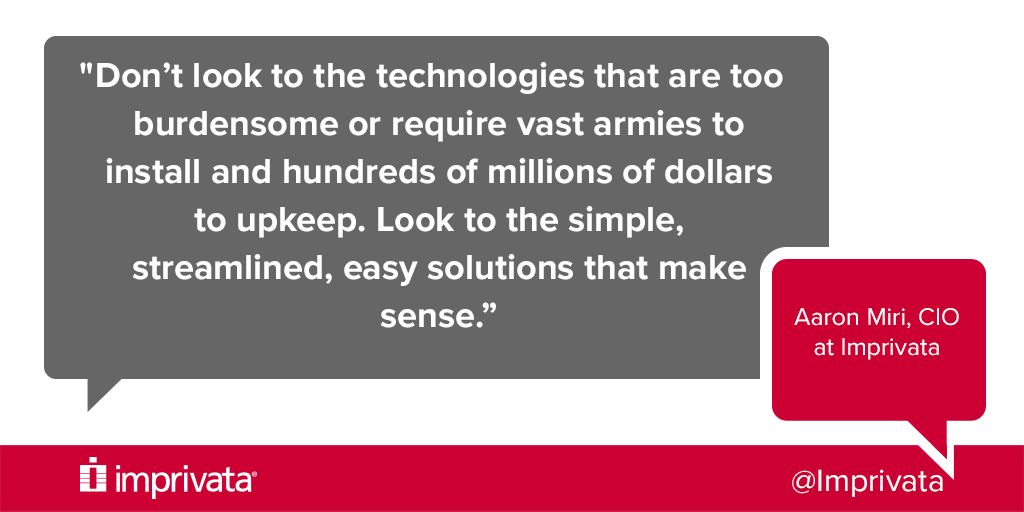Let the clinicians roam free! Building the hospitals of the future with virtualization
Heading into VMworld, I sat down with Imprivata CIO and former Walnut Hill Medical (WHMC) Center CIO, Aaron Miri, to talk virtualization.
WHMC’s objective was to open up in 2014 with the least amount of overhead possible. The hospital also wanted to maximize clinician engagement involvement by putting the clinician by the patient bedside as much as possible. To achieve their goals, they needed to minimize the amount of time spent logging into the computer, navigating the various systems, and documenting in the EMR.
To keep costs down, Aaron and the Walnut Hill team virtualized anything they could virtualize. According to Aaron, “the objective was to make the twenty first century hospital, and in my mind, that means you have to have the least amount of on premise gear as possible.”
Virtual desktop access with single sign-on
WHMC introduced virtual desktop access facility-wide by pairing VMware View and Dell WYSE Thin Clients. WHMC chose VMware View because it maximizes BYOD functionality by not requiring clinicians to download a client on their devices. To further maximize the efficiency and user-friendliness of virtual desktops, WHMC paired VMware View with Imprivata OneSign Single Sign-On (SSO) to give WHMC’s care providers quick, secure access to all their clinical applications.
Virtualization allowed WHMC clinicians to easily go from med search, to the OR, to the ICU, and have their session follow them. And from an administration perspective, the IT team wasn’t tasked with sending out dozens of people to various parts of the hospital to repair or fix an issue.
In the interview recording below, Aaron candidly discusses why he chose to implement virtualization at WHMC, the challenges associated with deployment, the impressive results, and what he predicts for the future of virtual desktop infrastructure (VDI).
Here are some of my favorite quotes from the interview

Aaron on deploying virtualization…
“When it came to working with VMWare, when it came to working with Imprivata, and when it came to putting out the devices and what not, it was pretty seamless - in that it just worked.”
Aaron on obstacles to implementation…
“The biggest barrier was training our clinicians on how to use the system. As a clinician it was a lot of handholding for them because it’s different. Its not a piece of paper, its not a notebook.”
Aaron on lessons learned…
“Know you’re changing your IT department to the innovation department, sitting with your clinicians, driving forward best practice, and worrying about keeping the lights on.”
Aaron on the results…
“On day one the doors opened with Imprivata enabled, and what I saw was a transformation, unlike anything I’d seen in previous lives, in the hospital experience, all the way through an admission at the very front door, all the way through discharge. Every clinician that touched a patient was badging in, badging out, and being able to roam seamlessly.”
Aaron on leveraging the cloud…
“You’re seeing Epic, you’re seeing key players leverage the cloud because of its usefulness, the utility of pushing out data everywhere, and being able to aggregate data sources quickly and seamlessly. So, hospital CIOs must get in front of that wave, and understand that if you’re not leveraging some component of it, you’re living in the dark ages.”
Aaron on BYOD…
“From my perspective, it’s bring your own device or nothing. You must enable the clinician to do what they need to do, to be able to roam effectively and to maximize time at the bed side.”
Attending VMworld? Don’t miss your opportunity to check out Imprivata OneSign at booth #862.
